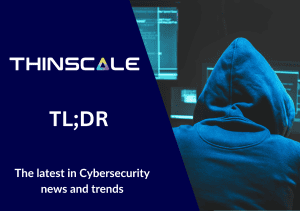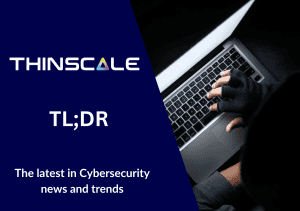With recent events, we have seen a lot of companies implement WaH as a business continuity strategy. At the Remote Working Summit 2020, we presented on aspects of the shift to WaH that were done well, some not so well, and some that were done poorly.
The Good
Companies who already had WaH programs in place, in general, all managed to get their workers working from home even if just temporarily. Though, for many, this was a struggle, especially at the initial stages. Unum, an insurance provider with 52% of their staff being remote, noted that the first week was the hardest in terms of moving their agents to WaH. However, companies that had an existing WaH program performed much better and had a much easier time at the start. This was due to work being devoted to scaling what they already had over trying to create everything from scratch.
Another positive was that the benefits of WaH became much more visible to a greater audience; WaH was embraced even by those who were its staunchest detractors. Through necessity, this “Road to Damascus” moment allowed companies to see the value WaH can bring.
The Ugly
Mixing up the name a little for the sake of clarity, by ugly, we mean areas where companies tended to struggle with WaH’s implementation. Despite a lot of positive PR about companies’ shift to WaH, the reality is that the move to WaH left many companies exposed even temporarily, especially when dealing with hardware. One example we shared was where a customer had to move 20,000+ agents to WaH but could only purchase 6,000 Chromebooks. We have heard of a lot of similar scenarios in the initial few weeks of the mass movement to WaH, which are largely forgotten now. It is important that we acknowledge these difficulties, as the reality is the transition to WaH was often not comfortable and may be required again should another pandemic occur.
The Bad
For a lot of people we were initially speaking with, the focus was on moving agents quickly to WaH, and as a result they were leaving their endpoints exposed. A common example we have seen is where agents were being sent home with devices where the only “security” on them was a VPN to access a virtual desktop. This left the endpoint vulnerable to all kinds of user-initiated risks (downloading risky files, accessing unsecured websites, etc.) and while this was an accepted risk initially, with security audits returning, those companies will now be under pressure to better protect these agent machines. WaH deployments will need to be as secure as on-premises deployments if they want to maintain compliance standards such as PCI DSS or HIPAA.
What are companies using for WaH?
With the sudden mass move to WaH, what are companies doing to provide agents with WaH-ready machines? The majority of companies used to following methods to provide machines to their agents:

A) Delivering existing machines to agent’s homes.
Taking existing corporate machines and moving them to agents at home was a method we have seen a few companies use to provide WaH for their agents. Often employees will need to line up outside of the office to collect their machines. This has implications for employee safety and is time consuming, further there is potential storage costs, and the risk of device loss. IT team now need to help potentially non-tech-savvy agents to setup this equipment and support these agents should they have any issues or questions post set-up. It is easy to see that this method is very inefficient and but many companies adopted this as a knee-jerk reaction to the sudden necessity of WaH.
B) Purchasing new equipment
Companies doing this were able to avoid some of the safety issues associated with above, but at a premium, needing to purchase either new computers or bootable operating systems through USBs. Even still, you had to send this hardware to all of your agents, meaning costs and time loss due to logistics were still present. However, in our experience, one of the biggest roadblocks to this method is supply and demand. Suppliers could not keep up with the need for devices; meaning companies were stuck for devices, and agents were unable to work. This resulted in considerable agent downtime. Then, when the agent machines finally arrive, IT still need to help the agents set up. When it comes to this method of purchasing and deploying machines, Steve Mosser of Sensée described it best: “It’s a nightmare”.
C) Leveraging agent-owned/personal devices.
The third and most effective option is to leverage agents’ existing devices for use as a Bring Your Own Device (BYOD) solution. Leveraging personal machines means that companies don’t have to purchase hardware which immediately reduces costs. Additionally, it means that companies do not have to spend time and money managing and distributing devices as they can simply use what agents already have. As agents are using their own machines, they can be up and running quickly with less downtime. Now, as mentioned earlier in our “Bad” section, there are right and wrong ways of leveraging agent devices – , they need to be locked down and controlled so that the “weakest link” (the agent) is no longer exposed.
Secure BYOD: the best WaH solution
Locking your agents’ machines down is vital, as an agent who can do anything is not only a weak link when it comes to security, but also when it comes to productivity when WaH. Secure Remote Worker is the premier WaH solution that ensures complete security and control on agents’ personal machines, and does so without crippling the agent’s personal machine.
Over the past few months, we have seen WaH become the foundational pillar for business continuity, however, having reviewed all of the ways of doing it, we believe that secure BYOD provides the most flexible, cost-effective, quickest and most importantly secure method of providing WaH. The model eliminates overheads when it comes to logistics, the cost of purchasing devices, and eliminates the risk of device loss. It is also the fastest way to get users onboarded and working, substantially reducing downtime.
With Secure Remote Worker included in your BYOD model, you gain all of the above benefits, while at the same time ensuring compliance, providing complete administrative control using the ThinScale Management Platform, and lets IT perform preliminary device checks with the powerful Validation Tool, allowing agents machines to be vetted before even installing Secure Remote Worker.
In essence, the answer is: if you want to provide agents with a fast, flexible, and secure WaH solution, your best bet is through secure BYOD; and Secure Remote Worker offers the most secure, easiest to manage, and fastest to deploying solution to achieve this.



